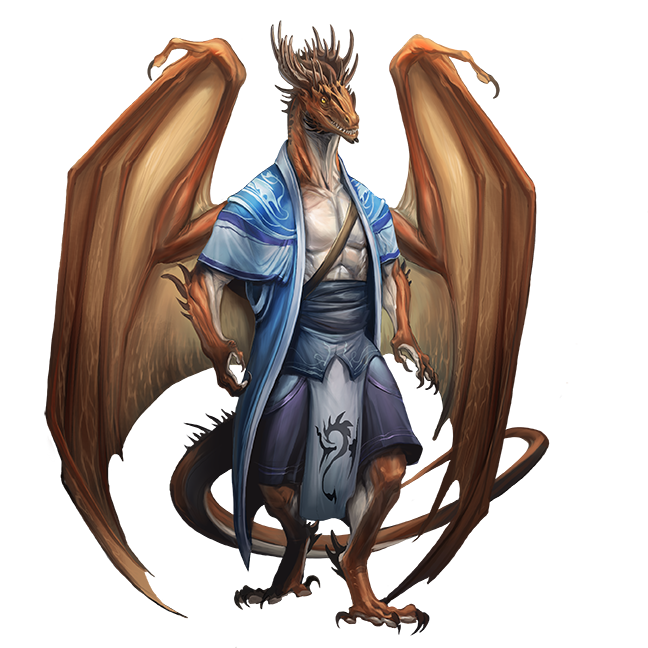Corinnguard
Legend
If Eastern Dragons were brought back to 5e D&D, what would everyone like them to be?
I'm actually somewhat partial to how Pathfinder handled the Draconal Agathions, in some sense the "highest" of their creature type.If Eastern Dragons were brought back to 5e D&D, what would everyone like them to be?
I'm actually somewhat partial to how Pathfinder handled the Draconal Agathions, in some sense the "highest" of their creature type.


I'm actually somewhat partial to how Pathfinder handled the Draconal Agathions, in some sense the "highest" of their creature type.
Firstly, their color is a manifestation of their mentality and mission, not an inherent characteristic. It requires effort, and a pretty major change of personality and goals, but it is possible for a draconal to change its color. I like that idea, and would want to see it implemented.
Second, all of them are good. There is no "evil" draconal. That fits with the general Eastern conception of dragons. (Yes, there are some evil dragons, but the vast majority are clearly beings worthy of reverence, whose dangerous behavior comes from the fact that they represent powerful forces beyond the control of mortals (usually waterways and weather), not because they're malicious or cruel.
Third, the colors don't map to the traditional chromatic colors, but rather to traditional eastern mythological associations of colors. One such is the the colors of the Five Phases, that is, the five elements featured in most Eastern stuff, namely, Fire/Red, Earth/Yellow, Metal/White, Water/Black (not blue!), and Wood/Green (which includes Wind). And the other is the colors of the Four Symbols + the "center" symbol between them: the Vermillion Bird of the South (Red), the Azure Dragon of the East (Blue), the Black Turtle-Snake of the North (Black), the White Tiger of the West (White), and the Yellow Qilin (or sometimes also "Dragon") of the Center (Yellow). So we get either Red/White/Black/Green/Yellow, or Red/White/Blue/Black/Yellow.
So, branching off this: there are long of six colors, and all long are naturally good, unless corrupted, which is rare. I think I'd probably link Blue to "heaven" and "void" and other such things and thus have four opposites: White vs Black (metal vs water), Red vs Green (fire vs wood), and Yellow vs Blue (fullness vs emptiness)--neither is better nor worse than the other, each has its value and each can be good or bad. Each represents some kind of virtue or positive quality, which could become excessive if taken too far, but that's why they have their opposite alignment, to keep them in check. Each long has some purpose or dedication in life: protecting a sacred place, watching over a waterway (river, lake, ocean, etc.), guiding the people of a particular town, speaking on the behalf of the Court of Heaven, hunting down the betrayers of a specific sacred oath, etc.
Though they have some limited elemental powers relating to their color, their primary focus is on more spiritual or metaphysical expressions of that thing. So a Laanlong, that is, a blue one, representing the element of Void, has powers which silence, separate, reveal, or transcend (so, perhaps, teleportation to transcend distance, or buffing effects to transcend limitations), while a Huanglong, that is, a yellow one, representing the element of Aether, has powers which complete, expand, create, or connect (so, summons and other conjurations, protective spells, healing, communication, etc.) Others might have other powers.
I want them accurate to the stories I like those lung and ryu
Compared to PF1, 5e doesn't have that many. The former has 7 different groups of dragons (chromatic, metallic, imperial, primal, planar, outer and esoteric). 35 true dragons in all.I simultaneously think eastern dragons belong in D&D but we also have too many damn dragon subtypes. In a perfect world, eastern dragons may have been the "neutral dragon" panoply instead of gem dragons (which just seem weird to me, a mishmash of ideas). But with fifteen "true dragons", I don't think we need another five "asian dragons" or "lung dragons" or however you want to call them.
And they say you don't have to be autistic to be into tabletop gamesCompared to PF1, 5e doesn't have that many. The former has 7 different groups of dragons (chromatic, metallic, imperial, primal, planar, outer and esoteric). 35 true dragons in all.
Meaning?And they say you don't have to be autistic to be into tabletop games
Who else would make a list of 35 brightly colored dragons with special magical powers?Meaning?
